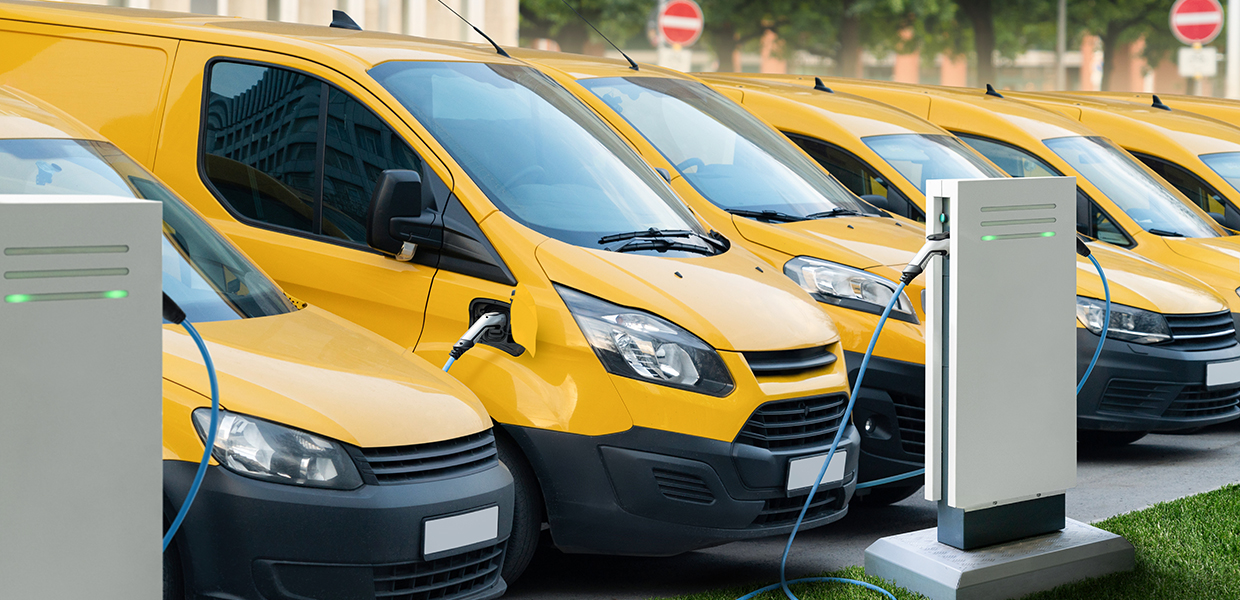Today, businesses of all sizes are recognising the importance of adopting eco-friendly practices. One significant way to achieve this is by transitioning to an electric vehicle (EV) fleet. But what impact will this have on your fleet’s Total Cost of Ownership (TCO) and how will this impact your bottom line?
Electric vehicles and their TCO advantage
When it comes to TCO, many still believe that diesel is king. There's certainly some merit to this notion – upfront costs for EVs can indeed be higher. However, here's the crucial point to consider: TCO is a long-term game. While the initial investment for EVs may require a more substantial financial commitment, the returns over time are substantial. Electric vehicles offer significant savings in key areas.
Firstly, there are fuel costs to consider. Electricity tends to be more cost-effective than gasoline or diesel, particularly with the volatility often seen in fuel prices. Despite fluctuations in energy prices, charging an electric vehicle is often still significantly cheaper than filling up with gasoline or diesel.
Secondly, maintenance costs for EVs are notably lower. With fewer moving parts compared to traditional internal combustion engine vehicles, EVs require less frequent and less expensive maintenance. Additionally, features such as regenerative braking, commonly found in EVs, contribute to reduced wear and tear on traditional brakes, thereby extending their lifespan.
Don't wait to start your EV journey
While transitioning to an eMobility solution may seem daunting, it also offers flexibility, allowing businesses to embrace EVs at their own pace. Rather than committing fully from the outset, there are several strategies to gradually integrate EVs into your fleet and assess their impact on TCO.
One approach is to phase out gradually. Instead of an abrupt transition, replace a portion of your fleet with EVs over time. This incremental approach allows you to gather valuable data on maintenance requirements, charging infrastructure needs, and overall efficiency. By gradually introducing EVs, you can refine your strategy and adapt to the evolving eMobility landscape.
Alternative EVs for last-mile-delivery
Businesses looking to adopt EVs for last-mile delivery should also consider micromobility options, like electric cargo bikes or Light Electric Vehicles (LEVs). Particularly suited for shorter trips and urban deliveries, these options offer a cost-effective and environmentally friendly alternative to traditional vehicles. Embracing this technology not only positively impacts TCO but also enhances your brand's image as a sustainable and forward-thinking organisation. Furthermore, these vehicles can contribute to reducing congestion in city centres, aligning with broader urban sustainability goals.
It's not just about the vehicles
The impact of EVs on TCO goes beyond just the vehicles themselves. Additional factors to consider include:
- Subsidies and Incentives: Many governments offer attractive subsidies and incentives to encourage businesses to adopt EVs. These can significantly reduce the upfront cost and improve your TCO. Research available programs in your region – they can include tax credits, grants for charging infrastructure, or reduced registration fees.
- Charging Infrastructure: The availability and cost of charging infrastructure can play a role in TCO. Consider your fleet's needs in terms of range and related charging, and research charging options in your area. This may involve installing charging stations at your depot or exploring partnerships with public charging providers, keeping in mind that owned charging is often more cost-effective than external charging.
- Optimising Charging Strategies: Fleet managers can further improve TCO by implementing smart charging strategies. This could involve taking advantage of off-peak electricity rates or installing solar panels at your depot to generate your own clean energy. Implementing a Battery Energy Storage System (BESS) could further improve the TCO of your EV fleet. The system could be connected to the grid, drawing energy during cheaper off-peak hours to be used later, or connected to a solar array for a truly green option.
-(2)-(1).png?h=503&iar=0&w=600&hash=0E40AA6B37537A36B6C7E76E83E7E8B3)
.jpg?h=628&iar=0&w=1200&hash=2E6253B4FAB1A7986951760DD51E735A)
.jpg?h=536&iar=0&w=1240&hash=306920EA99F7098AB17A3BE1861CB0CA)
